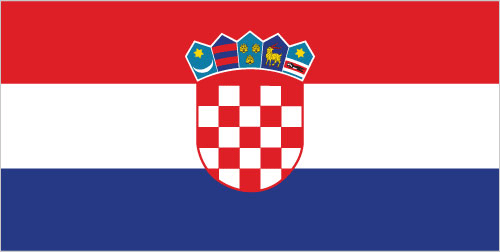
Though still one of the wealthiest of the former Yugoslav republics, Croatia's economy suffered badly during the 1991-95 war. The country's output during that time collapsed and Croatia missed the early waves of investment in Central and Eastern Europe that followed the fall of the Berlin Wall. Between 2000 and 2007, however, Croatia's economic fortunes began to improve with moderate but steady GDP growth between 4% and 6% led by a rebound in tourism and credit-driven consumer spending. Inflation over the same period remained tame and the currency, the kuna, stable. Croatia experienced an abrupt slowdown in the economy in 2008 and has yet to recover; economic growth was stagnant or negative in each year since 2009. Difficult problems still remain, including a stubbornly high unemployment rate, uneven regional development, and a challenging investment climate. Croatia continues to face reduced foreign investment. On 1 July 2013 Croatia joined the EU, following a decade-long application process. Croatia will be a member of the European Exchange Rate Mechanism until it meets the criteria for joining the Economic and Monetary Union and adopts the euro as its currency. EU accession has increased pressure on the government to reduce Croatia’s relatively high public debt, which triggered the EU’s excessive deficit procedure for fiscal consolidation. Zagreb has cut spending since 2012, and the government also raised additional revenues through more stringent tax collection and by raising the Value Added Tax. The government has also sought to accelerate privatization of non-strategic assets, with mixed success.
$78.9 billion (2013 est.)
country comparison to the world: 84
$79.7 billion (2012 est.)
$81.3 billion (2012 est.)
-1% (2013 est.)
country comparison to the world: 205
-1.9% (2012 est.)
-0.2% (2011 est.)
$17,800 (2013 est.)
country comparison to the world: 78
$17,900 (2012 est.)
$18,200 (2011 est.)
agriculture: 5%
industry: 25.8%
services: 69.2% (2013 est.)
21.1% (2011)
2.2% (2013 est.)
country comparison to the world: 82
3.4% (2012 est.)
1.715 million (2013 est.)
country comparison to the world: 124
agriculture: 2.1%
industry: 29%
services: 69% (2012)
21.6% (2013 est.)
country comparison to the world: 166 19.1% (2012 est.)
chemicals and plastics, machine tools, fabricated metal, electronics, pig iron and rolled steel products, aluminum, paper, wood products, construction materials, textiles, shipbuilding, petroleum and petroleum refining, food and beverages, tourism
-1.8% (2013 est.)
country comparison to the world: 181